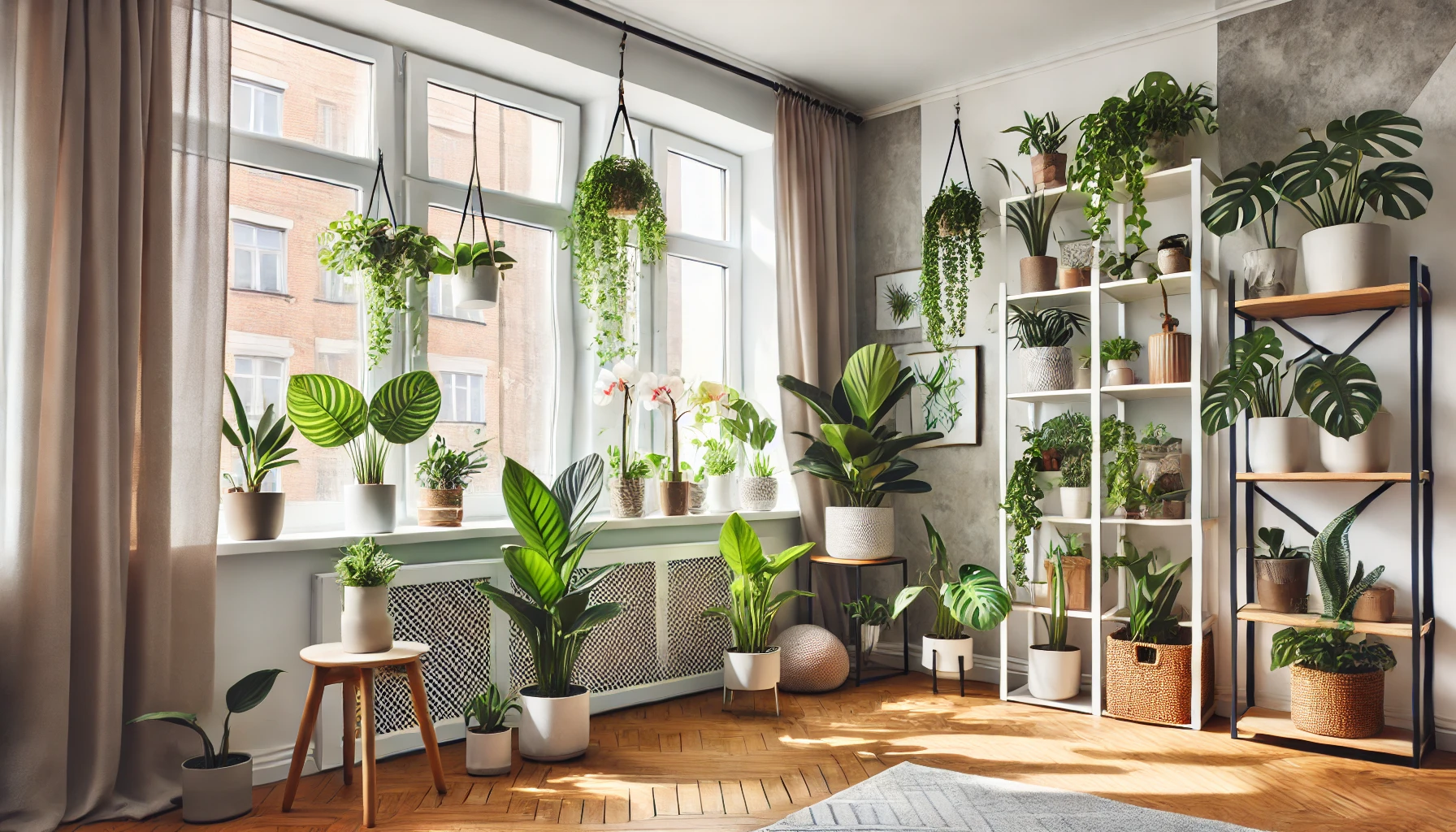Finding the right spot for your exotic plants is crucial for their growth and health, especially when you’re working with the limited space of an apartment. In this article, we’ll help you figure out where to place your plants based on their specific needs and the layout of your apartment.
Assessing Your Space
Before placing any plants in your apartment, assess the environment. Look at the lighting in different parts of your home, the temperature, and the level of humidity. Take note of windows, corners, and shelves where plants can thrive.
Questions to Consider:
- Does your apartment receive direct sunlight through certain windows?
- Which rooms are more humid (bathrooms, kitchens)?
- Are there drafts or areas that get too cold?
- Do you have shelves or tables to place smaller plants on?
Light Needs for Exotic Plants
Light is the most important factor when choosing the best spot for your plants. Most exotic plants thrive in indirect sunlight, but some prefer direct light.
Sunlight Preferences:
- Bright, indirect light: Best for plants like Fiddle Leaf Fig and Calathea.
- Low light: Ideal for plants like the ZZ Plant and Snake Plant.
- Direct sunlight: Perfect for plants such as Cactus and Succulents.
Tips for Maximizing Light:
- Place plants near windows, but not directly in the sunlight unless they need it.
- Use sheer curtains to filter harsh sunlight.
- Rotate plants regularly to ensure they get even exposure.
Temperature and Humidity: The Right Conditions
Exotic plants often come from tropical or subtropical environments, where they enjoy warm temperatures and high humidity.
Temperature Guidelines:
- Tropical plants: Prefer temperatures between 65°F to 85°F (18°C to 29°C).
- Succulents and cacti: Thrive in slightly cooler conditions but still need warmth.
- Keep plants away from drafts from windows, air conditioners, and heaters, as they can cause temperature fluctuations that stress the plants.
Humidity Needs:
- Many exotic plants need higher humidity levels to thrive.
- Bathrooms and kitchens tend to have higher humidity, making them great places for plants like Ferns and Orchids.
- Humidifiers can help boost moisture levels in drier areas of your apartment.
The Best Spot for Your Exotic Plants
Here are some specific spots to consider for placing your plants:
1. Near Windows with Indirect Sunlight
This is the best spot for most exotic plants. Place plants like Calathea, Fiddle Leaf Fig, and Pothos near windows that don’t get direct sunlight.
2. Bright, Sunny Corners
If you have a south or west-facing window, use the corners of the room for sun-loving plants like Cactus, Succulents, and Bird of Paradise. Ensure they receive plenty of natural sunlight, especially during the winter months.
3. Bathrooms and Kitchens
These spaces are typically more humid and can be great for plants that require moisture, like Peace Lily, Boston Ferns, or Orchids. Ensure they get enough light from nearby windows.
4. Shelves and Hanging Planters
If you’re limited on floor space, use vertical space by placing plants on shelves or hanging them in decorative planters. This setup works well for smaller plants like Spider Plants, Pothos, and Succulents.
5. Avoid Drafty Areas
Plants don’t do well in drafty areas, so make sure to keep them away from air conditioners, heating units, or open windows during colder months. Cold temperatures can cause your plants to go into shock.
Final Thoughts: Finding the Perfect Spot for Your Plants
Choosing the right spot for your exotic plants doesn’t have to be difficult. By considering their light, temperature, and humidity needs, and assessing your available space, you can create a perfect environment for your plants to thrive. Experiment with different locations until you find the ideal spot, and your plants will reward you with beautiful, healthy growth.
